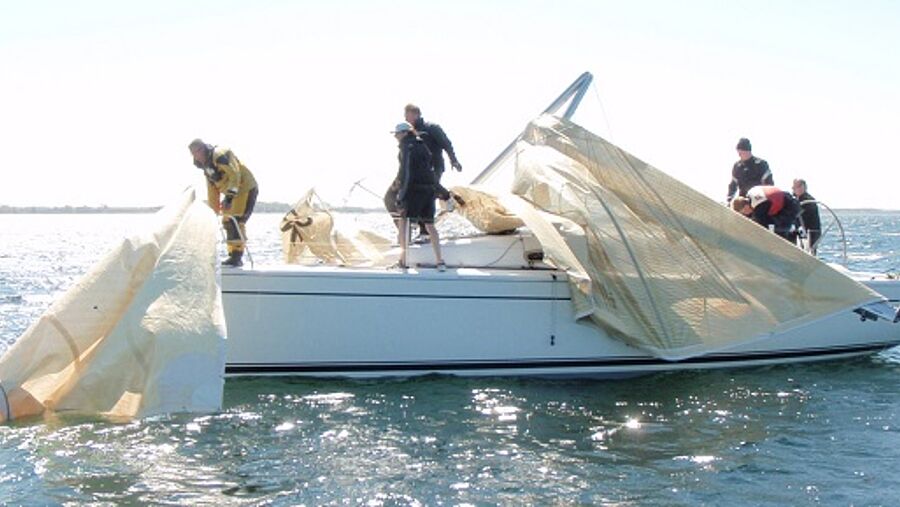
* Pantaenius UK Limited is authorised and regulated by the Financial Conduct Authority (Authorised No.308688)
06.11.2019
While many yacht owners devote themselves to polishing hulls, greasing winches and repainting bulkheads during winter, they often completely overlook one of the most critical parts of their yacht: the rig.
Expensive, frustrating and, indeed, dangerous damage could be avoided if the mast, shrouds, running and standing parts are carefully checked in winter. "When it comes to rigging, many owners are unfortunately still far too careless," says Axel zu Putlitz-Lürmann, damage specialist at Pantaenius Yacht Insurance.
Over the past three years, Pantaenius received 500 damage reports in connection with broken masts. When the mast of a yacht breaks, not only is the entire rig and the sails damaged, but also the hull. It is not uncommon for people to be hurt too. The larger the yacht, the greater the risk of a broken mast.

What you can do during winter storage
Often, it is components only worth a few Euros that stabilise the rigging or, if they wear out, can be the cause of its downfall. Whether shrouds on the mast, pins or gooseneck pins - many of these critical items of equipment can be inspected and replaced by owners themselves. "A detailed visual inspection can quickly reveal many defects," confirms the claims expert.
You can check the following points on the horizontal mast:
Ask the specialist
If you notice signs of wear, corrosion or cracks, you should consult a rigging specialist. In any case, it is a good idea to have your trusted rigger do a rig check on a regular basis. Their trained eyes will detect potential faults or hazards at an early stage.
Even if your boat has a furling jib, the professional check by a rigger makes sense. This is because the wire of the furling system is often exposed to strong torsion loads, for example when the headsail is rolled up under excessive pressure. Normally you will not be able to carry out the rigging wire inspection yourself, as the rolling system would have to be partially disassembled. You should rather entrust this work to a rigger.
Not only the control, also the correct trim of your rig by a specialist is important. Because a wrongly trimmed rig does not only influence the sailing characteristics of your boat, but can also lead to damage to the standing rigging and its connection to the mast and fitting. Additionally, if the rig is optimally trimmed, the yacht will sail at its best, thus you get more pleasure from sailing overall.
How often a professional rig check should be carried out depends on the loads the rig is exposed to. A yacht sailed in a regatta or a cruising yacht that is used for long trips must be checked more frequently than a boat that is only sailed on a daily or hourly basis.
Be honest: How old is the rig?
Salt water, UV radiation, the pressure from the sails: the rig is exposed to enormous stress throughout the season. It goes without saying that even the strongest material will eventually reach its natural half-life. Ask your rigger whether it is necessary to replace the standing equipment such as shrouds, stays and suspensions due to age and wear-and-tear.
If the replacement is necessary, it may sound like a big investment. This money is, however, well spent when it comes to avoiding mast breakage due to material fatigue.